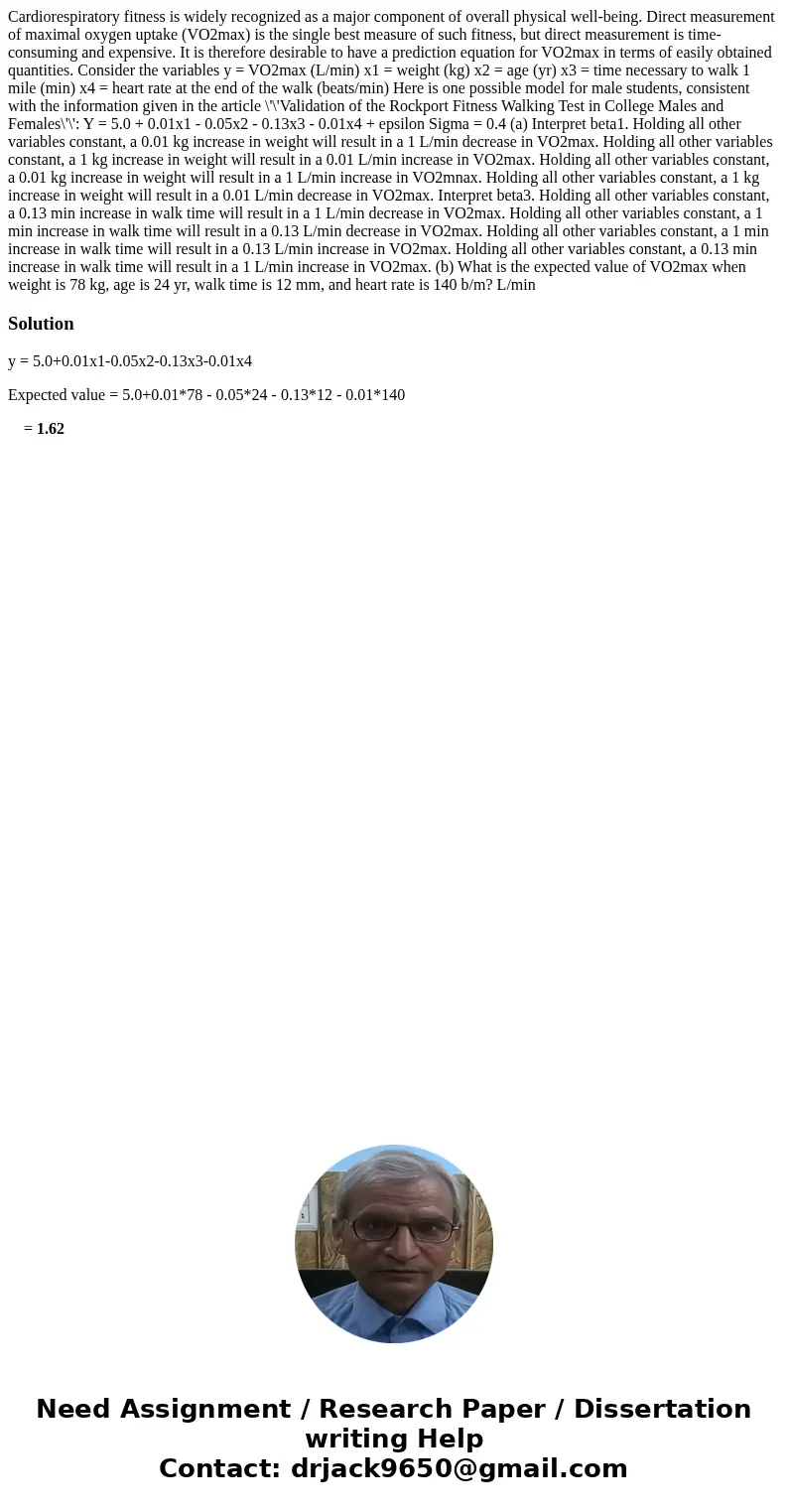Cardiorespiratory fitness is widely recognized as a major co
Cardiorespiratory fitness is widely recognized as a major component of overall physical well-being. Direct measurement of maximal oxygen uptake (VO2max) is the single best measure of such fitness, but direct measurement is time-consuming and expensive. It is therefore desirable to have a prediction equation for VO2max in terms of easily obtained quantities. Consider the variables y = VO2max (L/min) x1 = weight (kg) x2 = age (yr) x3 = time necessary to walk 1 mile (min) x4 = heart rate at the end of the walk (beats/min) Here is one possible model for male students, consistent with the information given in the article \'\'Validation of the Rockport Fitness Walking Test in College Males and Females\'\': Y = 5.0 + 0.01x1 - 0.05x2 - 0.13x3 - 0.01x4 + epsilon Sigma = 0.4 (a) Interpret beta1. Holding all other variables constant, a 0.01 kg increase in weight will result in a 1 L/min decrease in VO2max. Holding all other variables constant, a 1 kg increase in weight will result in a 0.01 L/min increase in VO2max. Holding all other variables constant, a 0.01 kg increase in weight will result in a 1 L/min increase in VO2mnax. Holding all other variables constant, a 1 kg increase in weight will result in a 0.01 L/min decrease in VO2max. Interpret beta3. Holding all other variables constant, a 0.13 min increase in walk time will result in a 1 L/min decrease in VO2max. Holding all other variables constant, a 1 min increase in walk time will result in a 0.13 L/min decrease in VO2max. Holding all other variables constant, a 1 min increase in walk time will result in a 0.13 L/min increase in VO2max. Holding all other variables constant, a 0.13 min increase in walk time will result in a 1 L/min increase in VO2max. (b) What is the expected value of VO2max when weight is 78 kg, age is 24 yr, walk time is 12 mm, and heart rate is 140 b/m? L/min 
Solution
y = 5.0+0.01x1-0.05x2-0.13x3-0.01x4
Expected value = 5.0+0.01*78 - 0.05*24 - 0.13*12 - 0.01*140
= 1.62

 Homework Sourse
Homework Sourse